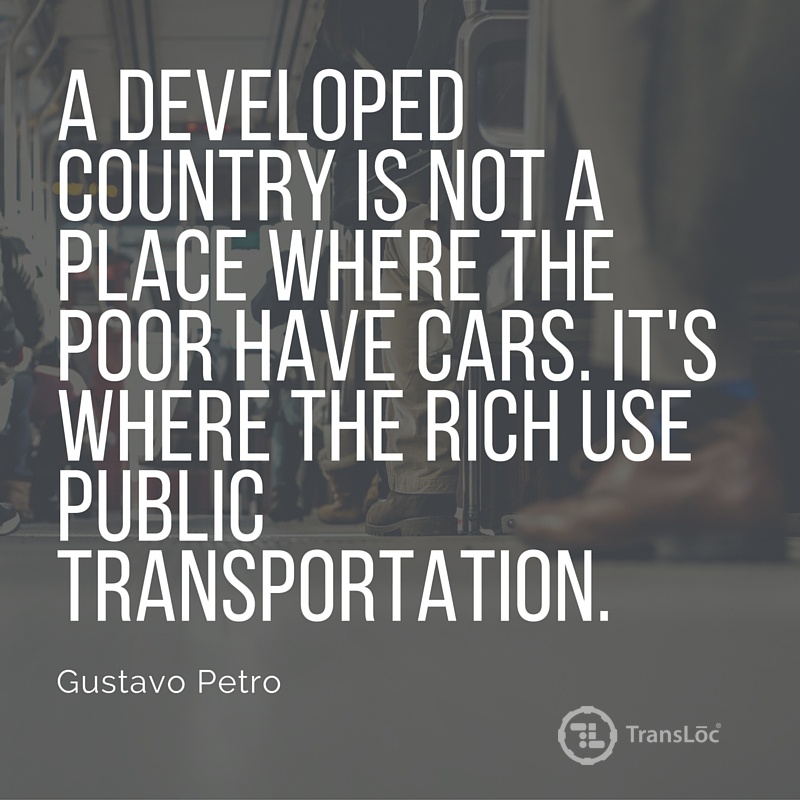
In early October, I had the pleasure of talking about how people will move in five years at the American Public Transportation Association’s annual meeting. Here at TransLoc, we’re passionate about solving the biggest problems plaguing the public transit industry and as such, I’m taking the liberty of extending this passion beyond the original presentation and into a series of four blog posts.
==========
OK, so by this point, we can anticipate the future by analyzing some important current trends, which helps understand our riders so that, best of all, we can offer service that wins. There is, however, some bad news:
None of this really matters. That is, none of this really matters if all of the hardware, systems, and services on which your transit system relies don’t work together. I’ll explain:
Let’s say you run a public transit agency (congratulations, by the way). Your agency has a fleet of vehicles—some large, dedicated to fixed routes, and some smaller vans and cutaways used for demand-response service, including ADA paratransit. Each of these vehicles is equipped with a GPS device for vehicle location, and you even offer a mobile app that helps your riders navigate the transit system in real time (nice work). With that as a baseline, let’s run through a series of scenarios.
Scenario 1:
You decide you’d like to add an automatic passenger counter (APC) to each vehicle. This technology will allow you to keep a more accurate record of how many boardings and alightings you have, giving you valuable insight that helps you understand your riders and your system even better than you already do. But, how does this new hardware interact with the existing GPS devices? Instead of just knowing boardings and alightings, it would be great to tie that directly to the physical location of the vehicle, further increasing your understanding of your transit system.
Scenario 2:
You decide that the GPS devices on your vehicles just aren’t cutting it—there’s too much lag on your live maps, the devices have a tendency to break down, and they aren’t nearly accurate enough for what you would like to deliver. Replacing these devices, while a chore, becomes a necessity. Beyond the obvious questions of “how do we do this,” “who is the right supplier,” and “how much does it cost,” what about “does this new hardware work with our existing systems”? Remember: you’ve invested in APC technology that gives further insight into your system. Do the new GPS devices integrate with your APCs like the old ones do?
Scenario 3:
Based on feedback from your riders, you decide to change mobile apps. The one you’ve been using is great, but it’s not quite as feature-rich as you’d like, and you see an opportunity to further delight your riders by providing a brand new mobile app. How can you guarantee that the vehicle locations shown on the new app will be as good [or better] than on the existing app? What about your back-end systems—how does the new app’s feedback system integrate with your customer service software? Learn how you can get insight into your passengers’ experience and improve your system through passenger feedback.
Imagine a world where you don’t have to worry about all of those questions. Imagine a world where everything just works together. This is the world we’re building at TransLoc.
We believe that everything essential to your transit agency should work together out of the box, so that you can focus on what you do: delivering the highest-quality service to your riders.
The beautiful part of this is that it is no longer a technology problem. That isn’t to say that TransLoc has solved every issue with public transit technology, but rather that the solutions lie in the hands of your transit agency. Without demanding that everything works together, it’s impossible to understand your riders or offer service that wins. Keeping technology simple and seamless is up to us—leveraging its power to deliver amazing service to your riders is up to you.